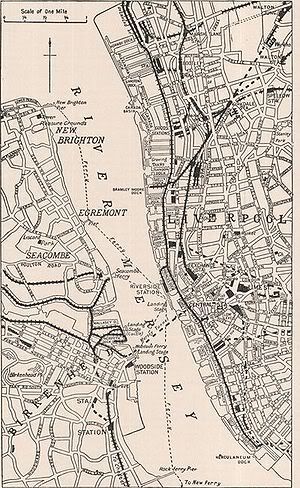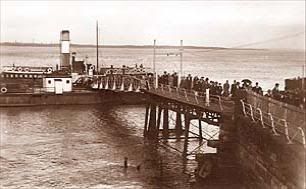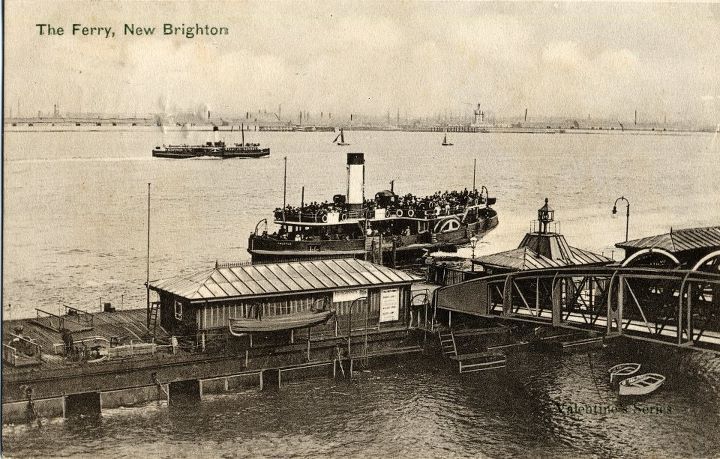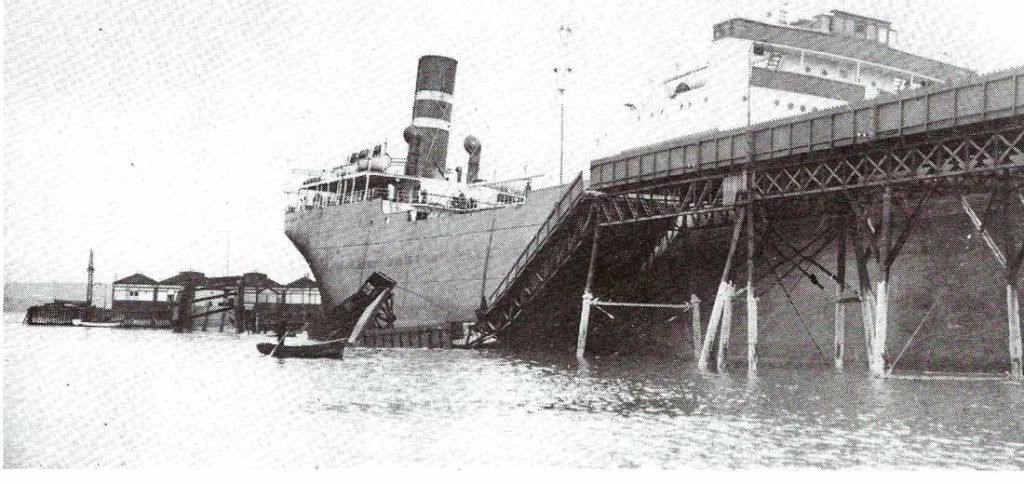Ferries and the River Mersey
People have been crossing the River Mersey by ferry between the Wirral and Liverpool for almost 800 years and even though many of these ferries no longer operate the places where they used to come and go from are still known. Place names such as Monks Ferry, Job's Ferry, New Ferry and Rock Ferry show where ferries used to run between the Wirral and Liverpool. Some of the main ferries to Liverpool operated from New Brighton, Egremont, Seacombe, Woodside, Monks Ferry, and Runcorn. Early ferryboats would have been rowing boats and were replaced by wooden sailing vessels. These were then replaced by steam vessels and then later on by diesel-electric powered vessels.
King John created the Borough of Liverpool in 1207 and confirmed a legal right of passages, which was a right to charge and receive a toll for being ferried over the river. The Burgesses of Liverpool didn't have to pay but everyone else had to pay a toll. In 1256 Bailiffs of the Borough of Liverpool documented a £10 rent (current value - over £7000) taken as payment for a lease of all royal rights which included the ferry. Robert de Ferrers lost his claim to the ancient ferry rights of Liverpool to the Crown in 1266, which then gave the rights to Edmund, Earl of Lancaster. In 1323 his son Thomas rebelled against King Edward II and the right of ferry transferred back to the Crown
The Corporation Years
Until the establishment of the Mersey Railway in 1886, the ferries were the only means of crossing the river, and so all of the routes were heavily used. All of the ferry routes were owned by private interests before coming under municipal ownership in the mid 19th century. The Woodside ferry was taken over by the Birkenhead Commissioners in 1858 and, in 1861, the Wallasey Local Board took over the ferry services at Seacombe, Egremont and New Brighton.
At Woodside, land between the Woodside Hotel and the end of the old pier was reclaimed, and in 1861 the floating landing stage was opened. The pontoons were towed into position, moored by chains originally made for the SS Great Eastern, and linked to the mainland by two double bridges.[2]
The Cheshire, the first passenger ferry steamer to have a saloon, operated from Woodside in 1864. The iron pier at Eastham was built in 1874. On 26 November 1878, the ferry Gem, a paddle steamer operated from Seacombe by the Wallasey Local Board, collided with the Bowfell, a wooden sailing ship at anchor on the River Mersey; five people died as a result.
This was not the only accident to disrupt the Ferry service the ship the Empire Commander embedded herself in the Egremont Ferry Landing Stage on 21st May1932 causing £7,340 worth of damage.








 Reply With Quote
Reply With Quote
Bookmarks